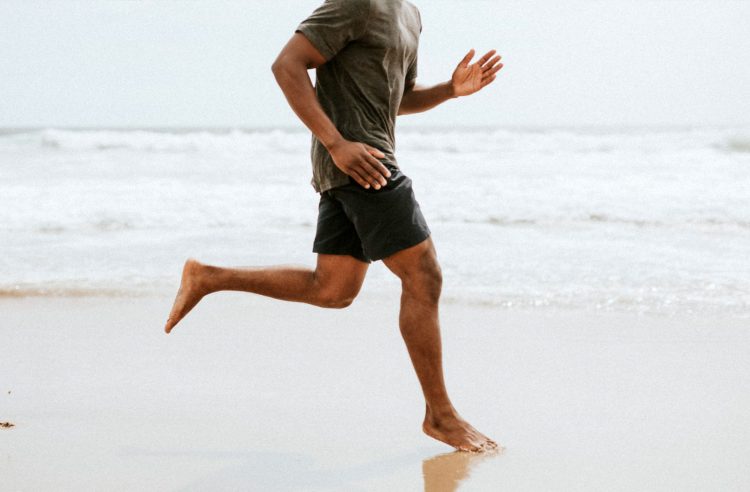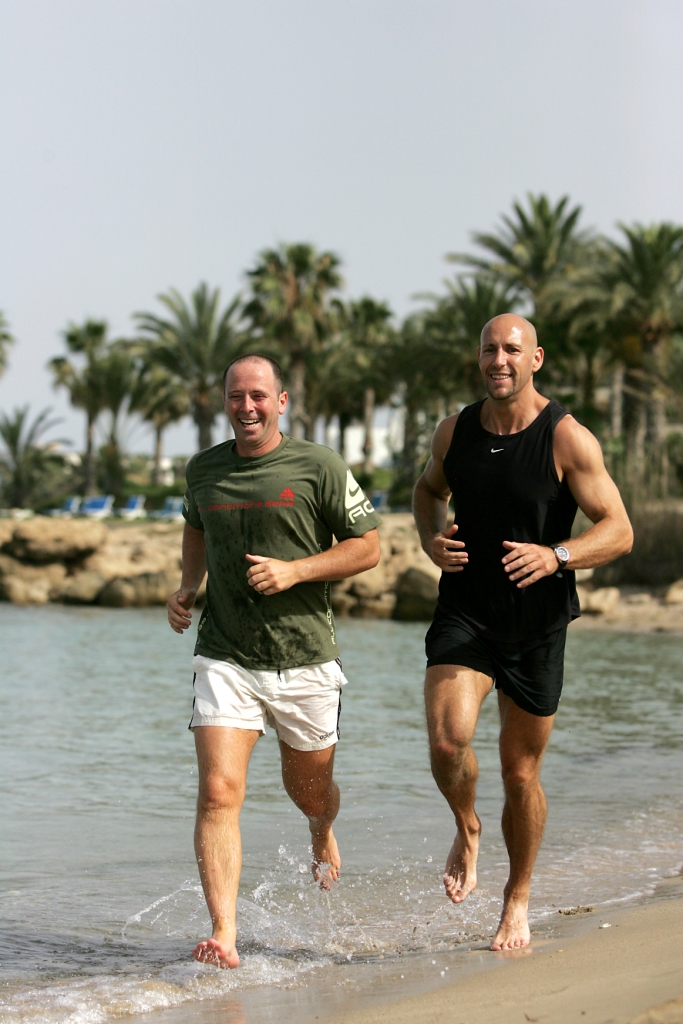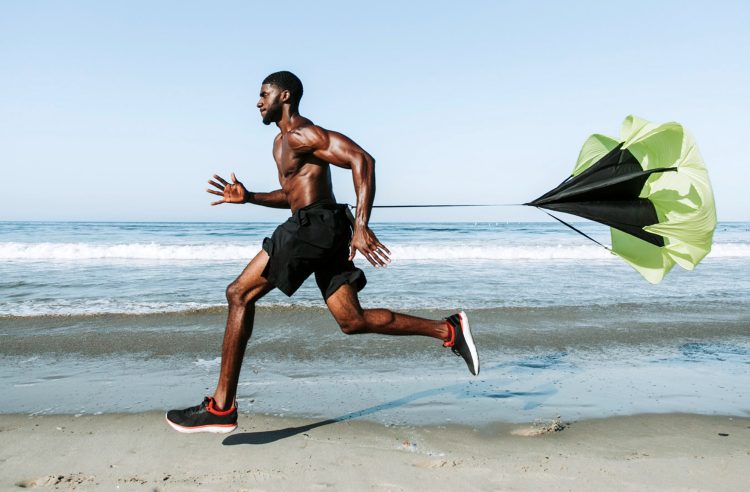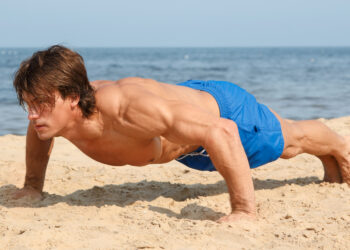Cardio is arguably the most important type of exercise. After all, it targets the cardiorespiratory system, comprising your heart, lungs, and blood vessels, which are critical for keeping you alive.
It’s no secret that good cardiovascular fitness is inextricably linked to improved cardiorespiratory health (1). Big biceps look cool, as do wide lats and six-pack abs. But if your cardiorespiratory system isn’t in good shape, muscle size, and strength are pretty much irrelevant.
So, if you want to live a longer, healthier life, make sure you do your cardio!
But what type of cardio is best? Some say cycling or swimming, while others believe rowing or elliptical training are better.
The fact is that all cardio exercises offer virtually the same benefits. Provided you work hard enough, your cardiorespiratory system will get stronger and more efficient, and your fitness will improve.
As a veteran personal trainer with over 30 years of experience, I believe enjoyment is the key to successful cardio. If you like your workout, you are more likely to do it. In contrast, it’s all too easy to find excuses to skip workouts you don’t enjoy.
Level Up Your Fitness: Join our 💪 strong community in Fitness Volt Newsletter. Get daily inspiration, expert-backed workouts, nutrition tips, the latest in strength sports, and the support you need to reach your goals. Subscribe for free!
One of my favorite cardio workouts is beach running, and it’s one that is popular with many of my clients, too.
In this guide, I reveal the benefits of beach running and share some precautions and tips to make your runs even more successful. You’ll also find a few of my favorite beach running workouts.
Beach Running Benefits
Unless you are lucky enough to live near the coast, going for a run on the beach will probably involve some additional traveling, or you may only do it while on vacation. Either way, you probably want to know how your efforts will be rewarded.
These are the main benefits of running on the beach:
Increased Muscle Activation
Running on an unstable surface, i.e., shifting sand, leads to greater muscle engagement than running on a road or treadmill (2). This is especially true for the ankle, knee, and hip stabilizers. Strengthening these muscles will improve your running endurance and gait and may lower your risk of subsequent injury.
Related: The 12 Best Strength Training Exercises for Runners
Stronger Feet
The beach is the perfect place to run without shoes. Barefoot running will strengthen the muscles, tendons, and ligaments of your feet.
The muscles that support your three arches – medial longitudinal, lateral longitudinal, and anterior transverse – can weaken due to wearing supportive shoes (3). Running barefoot forces these muscles to wake up and reengage.
Stronger foot arches can help prevent many foot and lower limb problems and injuries, such as fallen arches, bunions, hammer toes, and plantar fasciitis.
Increased Energy Expenditure
Running on sand uses more kilocalories than running on a firm surface. That’s because the ground shifts beneath your feet as you land and push off, essentially “stealing” some of the energy that would otherwise be used for propulsion.
Research shows you burn roughly 1.15 times more kilocalories by running on sand (4). You may also notice that your running heart rate is higher than usual. This is a clear indicator that you are working harder.
Related: Walking Vs. Running for Weight Loss – Which is Better?
Reduced Impact
Running is a high-impact activity, and that impact is a common source of injuries. However, running on sand, even barefooted, significantly lowers the ground reaction force (GRF) you’ll experience, leading to a safer, more joint-friendly workout (5).
In addition, barefoot running teaches you to run more on your forefoot and less on your heels. This also reduces the peak impact on landing.
Improved Running Performance
To be clear, running on sand is physically more taxing than running on a treadmill or road. Do it often enough, and your body will adapt to these increased demands. Your muscles and cardiovascular system will become stronger and more capable (6).
Then, when you return to running on a firm surface, subsequent runs will feel much easier, and your performance will noticeably improve. In short, if you want to run further and faster with less effort, beach running will help.
Improved Mental Health
Outdoor workouts like hiking and beach running offer a wide range of benefits, many of which are related to your mental health. The mental health benefits of beach running are primarily linked to increased enjoyment and being outdoors and include (7):
- Boosted self-esteem
- Enhanced emotional resilience
- Improved mood
- Better sense of well-being
- Improved mental clarity
- Increased mindfulness
- Increased relaxation
- Reduced stress
Beach Running Precautions and Tips
Have I inspired you to go for a run on the beach? Excellent! However, before you slip off your sneakers and hit the sand, please take note of these precautions and tips so your workout is as safe, enjoyable, and effective as possible.
Level Up Your Fitness: Join our 💪 strong community in Fitness Volt Newsletter. Get daily inspiration, expert-backed workouts, nutrition tips, the latest in strength sports, and the support you need to reach your goals. Subscribe for free!
Don’t Do Too Much Too Soon
Running on the beach is more demanding than running on the road or a treadmill. As such, it’s easy to get carried away, do too much too soon, and end up tired, sore, and even injured. Keep your first few beach runs slow and short to see how your body responds. Increase speed and duration gradually over the coming weeks.
Run Mostly on Wet Sand Initially
Dry sand is very challenging to run on. It absorbs a lot of your energy and can turn a short run into a tough workout. Make life easier by venturing closer to the water’s edge and running on wet sand. You can have the occasional foray onto the dry sand, but running on firmer wet sand is usually more enjoyable.
Watch Your Step
While running on sand is typically more forgiving than road running, there are other hazards you must be aware of, such as stones, discarded trash, and anything else that could hurt your feet. Make sure you watch where you are going to avoid standing on anything you shouldn’t.
Balance the Slope
Beaches invariably slope down toward the water’s edge. This means that running next to the sea puts more stress on one leg than the other. If you always run in this fashion, you could develop strength imbalances. Avoid this problem by running in both directions, i.e., two miles out and two miles back along the same stretch of beach.
Slip, Slop, Slap!
Beach running often means getting more sunshine than you are used to. Not only from above but reflecting up at you from the sea and sand, too. While sunshine will boost your mood and increase vitamin D production, too much can be harmful, so take some precautions.
Australians have a saying – slip, slop, slap, which is a great way to remember how to stay safe in intense sunshine:
- Slip on a shirt
- Slop on sunscreen
- Slap on a hat
You could also wear sunglasses to protect your eyes from any glare or grains of sand that blow in your face.
Sample Beach Running Workouts
While you could head out and run on the beach, you’ll probably get better results if you follow a more structured approach. Here are a few of my favorite beach running workouts, tried and tested just for you.
But before you start any of the following, make sure you prepare your muscles and joints with a brief warm-up. Start with some walking and then then mobilize your ankles, knees, and hips. Finish off with a few lower-body dynamic stretches, focusing on your calves, hamstrings, glutes, abductors, and adductors.
Warmed up and ready to go? Then, let’s get started!
1. Out and Back
This workout is based on a Royal Marines basic fitness test. Set a timer for 15 minutes and then run along the shoreline at a comfortable pace. Your heart rate should be around 60% of your maximum or an RPE of around 5/6.
After 15 minutes, stop and rest for a few moments. Do a few more warm-up stretches if you wish.
Then, when you are ready, run back the way you came but, this time, pick up the pace and work as hard as possible. Your goal is to see how far under 15 minutes you can get for the same distance.
Feel free to shorten or lengthen this workout based on your current fitness, needs, and goals. Just remember this principle – easy run out, hard run back.
2. 100-Step Walk/Run Intervals
This is an excellent workout for beginners and anyone looking for an easy recovery run. It’s also a great way to occupy your mind as you power along the sand.
For this workout, simply alternate between 100 walking steps and 100 running steps. Continue this pattern for as long as you like, e.g., three miles or 40 minutes. Try to increase the duration as your fitness and beach running tolerance improves. You can also increase the number of steps per interval.
3. Fartlek
Fartlek is Swedish for speed play and is a mixed-pace workout that enhances all aspects of running fitness. Simply head out and then vary your pace according to how you feel. For example:
- 10-minute walk/jog warm-up
- Run fast for 3 minutes
- Slow jog/walk for 60 seconds
- Comfortable run for 3 minutes
- Dune sprints for 5 minutes
- Very slow jog/walk for 2 minutes
- Run fast for 4 minutes
- Comfortable run for 2 minutes
- 10-minute walk/jog cool down
Adjust the duration and intensity of your workout based on your fitness. However, remember to run in both directions along the shore to avoid developing any imbalances due to the slope.
4. 100-Yard Turnarounds
This is a workout that you’ll love to hate; you’ll love how effective it is but hate that it’s so tough!
Place two markers, e.g., rocks 100-yards/strides apart. Then, after your warm-up, run back and forth between the markers ten times to total 1000 yards. Rest for 3-5 minutes, then repeat three to five times.
The constant stop/turn/start/accelerate nature of this workout will sap your strength and drive your heart rate through the roof. However, after a few weeks of this training, your fitness and running performance will improve noticeably.
Beach Running – Closing Thoughts
Many people see exercise as something to be tolerated rather than enjoyed. Consequently, their motivation levels are very low, and they skip more workouts than they complete. Needless to say, such a broken exercise program is rarely effective.
However, add some enjoyment to your workouts, and everything changes. Instead of looking for reasons to avoid exercise, working out will become a part of your lifestyle and something you look forward to.
Beach running is way more fun than plodding away on a treadmill. It may also be more enjoyable than road running. Either way, running on sand offers a wide range of additional health and fitness benefits. So, head to the shore, pull off your sneakers, and enjoy running with the sand between your toes. Just remember your sunscreen!
References:
- Mersy DJ. Health benefits of aerobic exercise. Postgrad Med. 1991 Jul;90(1):103-7, 110-2. doi: 10.1080/00325481.1991.11700983. PMID: 2062750.
- Pinnington HC, Lloyd DG, Besier TF, Dawson B. Kinematic and electromyography analysis of submaximal differences running on a firm surface compared with soft, dry sand. Eur J Appl Physiol. 2005 Jun;94(3):242-53. doi: 10.1007/s00421-005-1323-6. Epub 2005 Apr 7. PMID: 15815938.
- Chauhan HM, Taqi M. Anatomy, Bony Pelvis, and Lower Limb: Arches of the Foot. [Updated 2022 Nov 9]. In: StatPearls [Internet]. Treasure Island (FL): StatPearls Publishing; 2024 Jan-. Available from: https://www.ncbi.nlm.nih.gov/books/NBK587361/
- Lejeune TM, Willems PA, Heglund NC. Mechanics and energetics of human locomotion on sand. J Exp Biol. 1998 Jul;201(Pt 13):2071-80. doi: 10.1242/jeb.201.13.2071. PMID: 9622579.
- Jafarnezhadgero AA, Fatollahi A, Granacher U. Eight Weeks of Exercising on Sand Has Positive Effects on Biomechanics of Walking and Muscle Activities in Individuals with Pronated Feet: A Randomized Double-Blinded Controlled Trial. Sports (Basel). 2022 May 2;10(5):70. doi: 10.3390/sports10050070. PMID: 35622479; PMCID: PMC9146857.
- Drum SN, Rappelt L, Held S, Donath L. Effects of Trail Running versus Road Running-Effects on Neuromuscular and Endurance Performance-A Two Arm Randomized Controlled Study. Int J Environ Res Public Health. 2023 Mar 3;20(5):4501. doi: 10.3390/ijerph20054501. PMID: 36901510; PMCID: PMC10002259.
- Coventry PA, Brown JE, Pervin J, Brabyn S, Pateman R, Breedvelt J, Gilbody S, Stancliffe R, McEachan R, White PL. Nature-based outdoor activities for mental and physical health: Systematic review and meta-analysis. SSM Popul Health. 2021 Oct 1;16:100934. doi: 10.1016/j.ssmph.2021.100934. PMID: 34646931; PMCID: PMC8498096.











